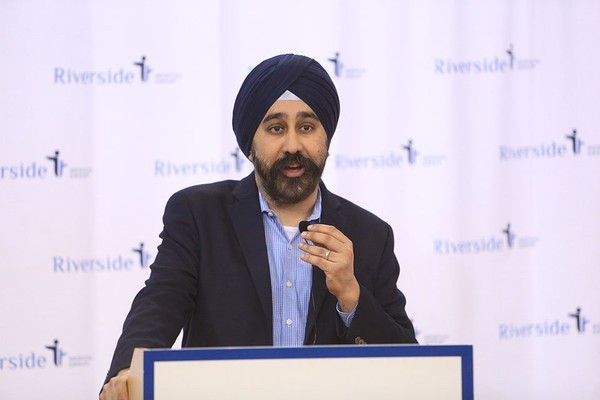
Bodh Gaya is a Buddhist pilgrimage site in Gaya District of Bihar. Famous for the Mahabodhi Temple, It was here under the Bodhi tree that Gautama Buddha attained enlightenment.
It is now one of the UNESCO World Heritage Sites, and a lot of foreign countries, including Japan and China, have helped the Indian government in building facilities for the Buddhist pilgrims. The place is bustling with pilgrims all through the year from India and abroad who come to pay their homage in monasteries, temples and remnants of Bodhi Tree.
Located near the river Neranjana, Bodh Gaya was earlier known as Uruwela. It was also known as Sambodhi, Vajrasana or Mahabodhi until the 18th century CE. It is one of the four important Buddhist sites that include: Kushinagar, Lumbini and Sarnath.
Great Buddha Statue
This statue of Lord Buddha is the tallest in India and was instated by the XIV Dalai Lama in 1989. It is a meditating Buddha resting on a giant lotus, constructed using intricately carved sandstone and red granite.
PRETSHILA HILL
Pretshila Hill (meaning Hill of Ghost), around 8 km north-west of Gaya, is a revered place for Hindus where they do pind daan (a religious ritual performed for the peace of the departed souls). On top of the hill lies a temple dedicated to Lord Yama, who as per Hindu mythology is the God of Death. The temple was initially constructed by Rani Ahilyabai Holkar of Indore but has been renovated several times. You can see a tank called Ramkund close to the temple, where it is believed that Lord Ram bathed once. People are of the belief that taking a bath in this tank washes away all the sins of devotees.
DUNGESHWARI CAVE TEMPLES
Drive about 12 km northeast of Gaya to reach the ancient Dungeshwari Cave Temples, also known as Mahakala Caves. It is believed that Lord Buddha meditated in the three caves here before continuing his journey to Bodhgaya. The caves here also feature Buddhist shrines which are called Sujata Sthan by the natives. There is an interesting story behind the existence of these cave temples, which states that during his self-mortification, Gautama became extremely weak and starved. At that time, a lady named Sujata from a nearby village offered him food and water. Later Gautama realised that one cannot attain enlightenment by self-indulgence or self-abasement. He then carried on with his journey and reached Bodhgaya where he finally attained enlightenment. In one of the cave temples, you can see a beautiful golden statue of Buddha, which is about 6 feet tall. When in Gaya, do not miss out on paying a visit to these ancient cave temples as the journey will add to your Buddhist experience.
BARABAR CAVES
About 24 km north from Gaya lies Barabar Caves, which are probably one of the oldest existing rock-cut caves in India. These caves, most of them dating from the Maurya Empire (322-185 BCE), are situated in Makhdumpur block of Jehanabad district, Bihar. Some caves here also have inscriptions from the Ashokan period. Four caves, namely Sudama, Karan Chaupar, Lomas Rishi and Vishwa Zopri, basically form the Barabar Caves. All these caves are fascinating in their own way. While Lomas Rishi caves resemble the huts where Buddhist monks used to live in, the Sudama Cave has arches like a bow. All these caves have some interesting stories to tell here. Make sure to carry some water along as there are no shops or for that matter no place to stay in the vicinity of these caves.
DEO SUN TEMPLE
Built during the 8th century by Chandravanshi King, Bhairavendra Singh, Deo Sun Temple in Aurangabad district is one of the most notable temples and a major crowd-puller in Bihar. It is often noticed that devotees and travellers visiting Gaya make a point to explore this age-old temple, which is about 70 km drive from the city.
At present, the sanctum of the temple features beautiful idols of the presiding deities, namely Vishnu, Surya and Avalokitesawara. If you walk outside the main hall, you will see some broken idols of Gods and Goddess along with sculptures of Sun God.
As the temple is among few existing ancient sun temples in the country, it makes for a must visit religious site for Hindus.





Be the first to comment